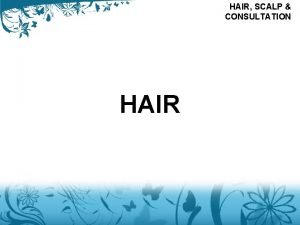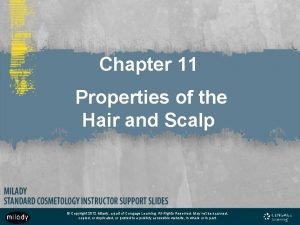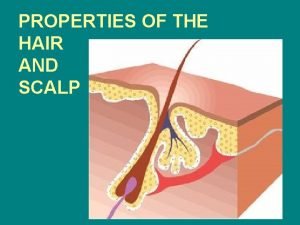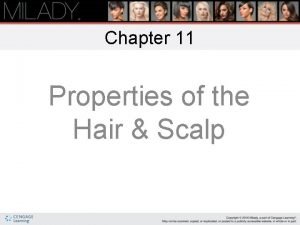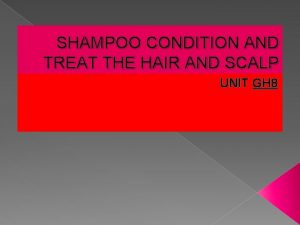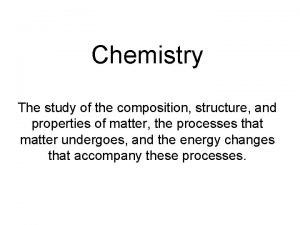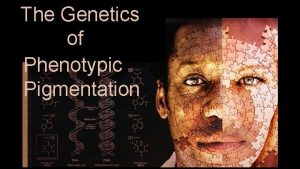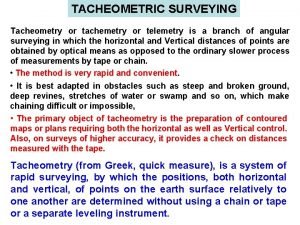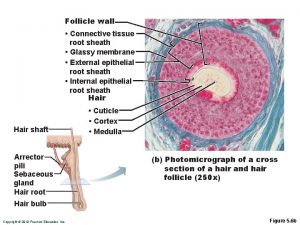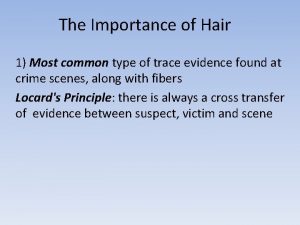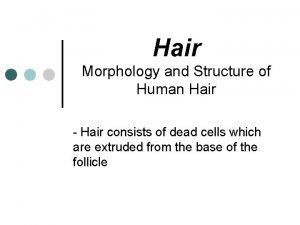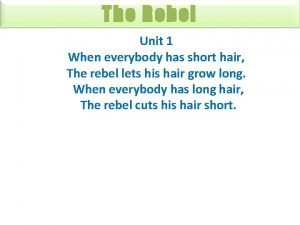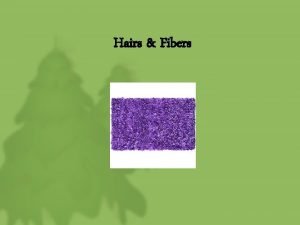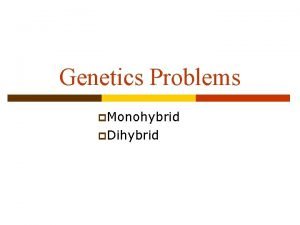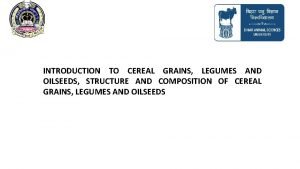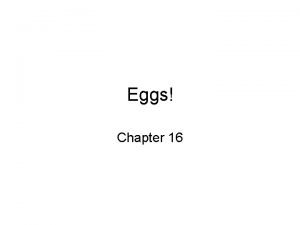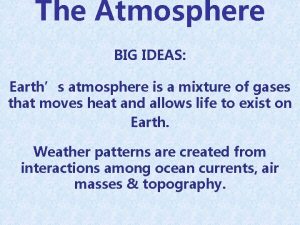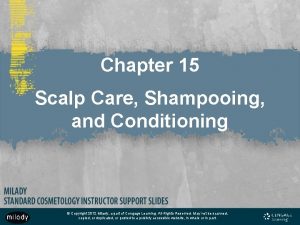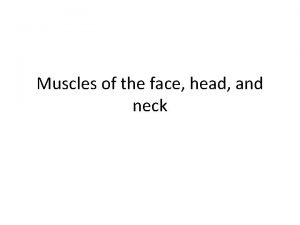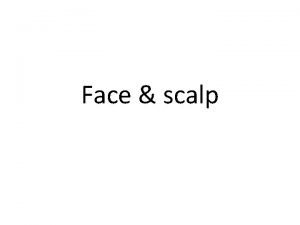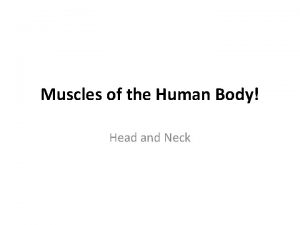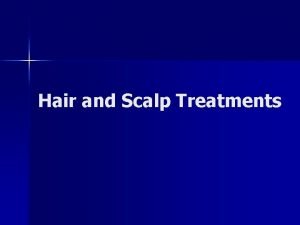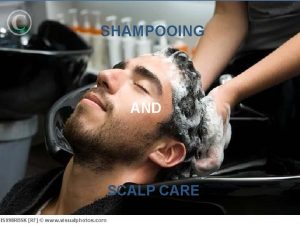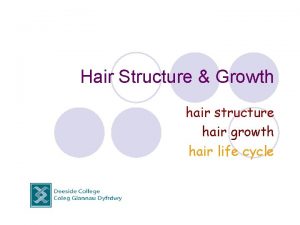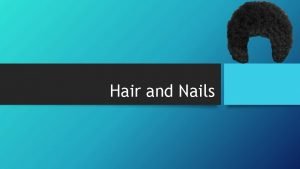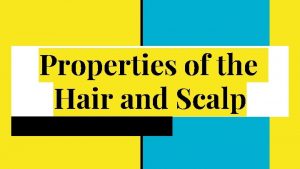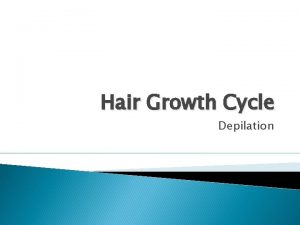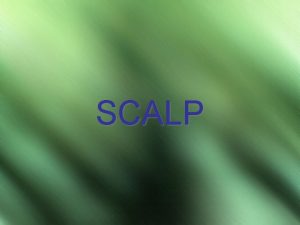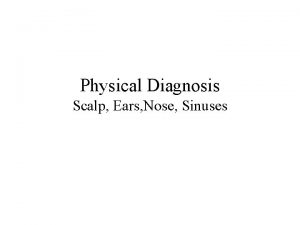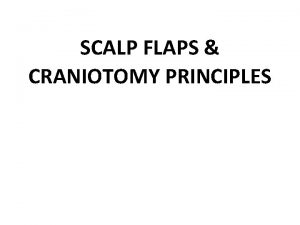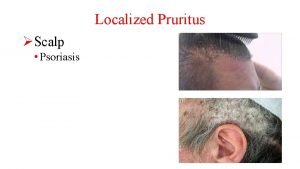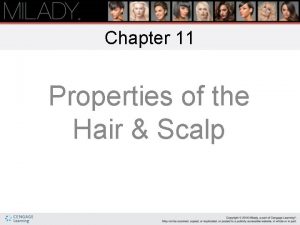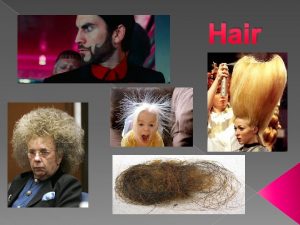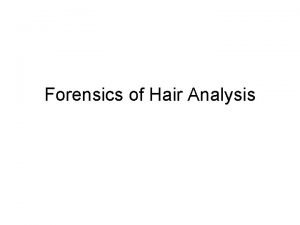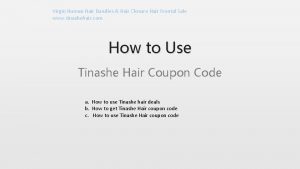Properties of the Hair Scalp Structure Composition and


























- Slides: 26

Properties of the Hair & Scalp Structure, Composition, and Growth Cycles

Questions to Consider: Ø Is hair alive or dead? Ø What makes up hair? Ø Hair consists of what chemicals? Ø How can the family members have different hair color? Ø Does hair grow in different cycles? Ø Why does hair stop growing?

Trichology Ø Greek word meaning “study of the hair” Ø Trichos means hair in Greek Ø We study the structure of hair, composition, and grow cycles to understand how salon services effect different hair types, and to select better procedures and products for our clients.

Structure of Hair Ø Hair has two parts: a) Hair root- Part of hair below the skins surface b) Hair shaft- Extends above the skin surface

Structure of the Hair Root Follicle- Tube like depression in the skin that the hair grows out of onto the surface Ø Hair Bulb – Thick club shaped structure at the bottom of the hair root Ø Arrector Pili – Small involuntary muscle that makes hair stand straight up when scared or cold Ø Sebaceous Gland – Connected to the hair follicle, this gland secretes oil substance called sebum Ø

Structure of the Hair Shaft Ø Cuticle - Outer layer of the hair, consist of overlapping scales. Provides the shine and feel of the hair, as well as protection Ø Each scale is attached to the cortex Ø Cuticles have the ability to open and close

The Cortex Ø Cortex is the middle layer of the hair Ø 90% of the hair weight comes from the cortex Ø Hair color pigment (melanin) is found in the cortex Ø Physical and chemical changes in the hair take place in the cortex

The Medulla- Innermost part of the hair strand Ø Composed of circular cells Ø Some hair may lack a medulla, (fine, natural blondes) Ø Little is known about the function of the medulla Ø The medulla does not effect salon services Ø

Chemical Composition of the Hair is composed of protein, that grows from the cells in the hair follicle Ø As the protein grows, it keratinizes (hardens) Ø When hair pushes its way through the skin, it is no longer alive Ø 90% protein, made up of amino acids, which make up elements Ø

COHNS Elements Hair is made of the ”COHNS” elements: Ø C- Carbon 51% Ø O- Oxygen 21% Ø H- Hydrogen 6% Ø N- Nitrogen 17% Ø S- Sulfur 5% Ø

Hair Structure Ø Hair is like a ladder of chemical elements Ø The “COHNS” elements join together by peptide bonds, (end bonds). Think of it as the two vertical parts of a ladder. Ø The side bonds are the “steps of the ladder”

Polypeptide Chain Ø A Polypeptide Chain is made up of many amino acids (elements) connected by peptide bonds Ø Polypeptide Chains are coiled in a spiral shape called a helix

Side Bonds Ø The side bonds of the cortex are made up of hydrogen, salt and disulfide bonds Ø Side bonds holds the kertain (protein) fibers in place Ø Account for the strength and elasticity of the hair

Hydrogen and Salt Bonds Ø Hydrogen and Salt bonds are weak and are easily broken by heat and/or water Ø Example: Styles that do not hold up in extreme heat or moisture outside Ø Both account for 1/3 of the hairs strength

Disulfide Bonds Ø Disulfide bonds are chemical side bonds that are not easily broken, it requires chemicals to be broken, such as relaxers, permanent hair color, permanent waves, and bleach Ø Joined by two cysteine amino acids to create a cystine Ø Accounts for 1/3 of hairs strength

Where does hair color come from?

Hair Pigment ( Melanin ) Ø Melanin is located in the cortex Ø Natural hair color pigment comes from tiny grains of pigment called melanin Ø The type of melanin, amount and distribution determines someone's hair color

Eumelanin pigment gives hair its black to brown hues Ø All hair colors contain both eumelanin and pheomelanin. It is the ratio of pigment, and size of granules that determine the hair color Ø

Pheomelanin Ø Phelomelanin provides hair colors from reds to blondes Ø The color result will be determine by the size, distribution and type of color pigment

Types of Hair Ø Two main types of hair found on the body vellus and terminal Ø Vellus- (lanugo) not pigmented and does not have medulla Ø Found in areas normally considered hairless Ø Aids in evaporation of perspiration

Terminal Hair Ø Terminal hair is found on the legs, arms, scalp and body areas of men and women Ø Terminal hair is coarser than vellus, it is pigmented, except gray hair Ø Depending on the age, genetics and hormones, all follicles can produce terminal or vellus hair

Hair Growth Cycles Ø Hair has three growth cycles that repeat itself over and over throughout life Anagen-Growth phase Ø Catagen-transition phase Ø Telogen- resting phase Ø

Anagen Growth Phase Ø New hair is produced Ø Cells grow faster than any other cell of the body Ø Women's hair grows faster than men's Ø 90% of hair in anagen phase Ø Average growth – 1” per month

Catagen Transition Phase Catagen phase is between growing and resting Ø It marks the end of the growing phase Ø Follicle shrinks and detaches from the dermal papilla Ø Less than 1% of hair is in the catagen phase Ø Phase lasts from 1 -2 weeks Ø

Telogen Resting Phase Telogen phase lasts until hair is shed or remains until new hair pushes it out Ø 10% of hair is in the Telogen phase Ø Phase lasts from 3 to 6 months Ø The entire growth cycle repeats it self on the average of 4 to 5 years Ø

Works Sited Ø Milady’s Standard Cosmetology Textbook 2004 edition
 Chapter 11 properties of the hair and scalp answers
Chapter 11 properties of the hair and scalp answers Hair shaft diagram milady
Hair shaft diagram milady Dry hair and scalp can be caused by inactive
Dry hair and scalp can be caused by inactive Disulfide bonds in hair
Disulfide bonds in hair Cossh stand for
Cossh stand for Medicated scalp lotion definition
Medicated scalp lotion definition Study of composition structure and properties
Study of composition structure and properties Dark hair and blonde hair parents
Dark hair and blonde hair parents Tacheometric surveying
Tacheometric surveying Connective tissue root sheath
Connective tissue root sheath Hirsuities
Hirsuities Hair composition
Hair composition Morphology hair
Morphology hair What does the rebel do when others keep their hair short
What does the rebel do when others keep their hair short Hair grows in diagonal tubes called hair
Hair grows in diagonal tubes called hair Human vs animal hair
Human vs animal hair Hh
Hh Intensive vs extensive
Intensive vs extensive Chemical properties of citric acid
Chemical properties of citric acid Structure of cereal
Structure of cereal Draw the structure of an egg
Draw the structure of an egg Ideas about earth atmosphere
Ideas about earth atmosphere What are the two basic requirements for a healthy scalp
What are the two basic requirements for a healthy scalp Risorius muscle
Risorius muscle Muscles on scalp
Muscles on scalp Frontal muscles of the body
Frontal muscles of the body Medulla types
Medulla types
